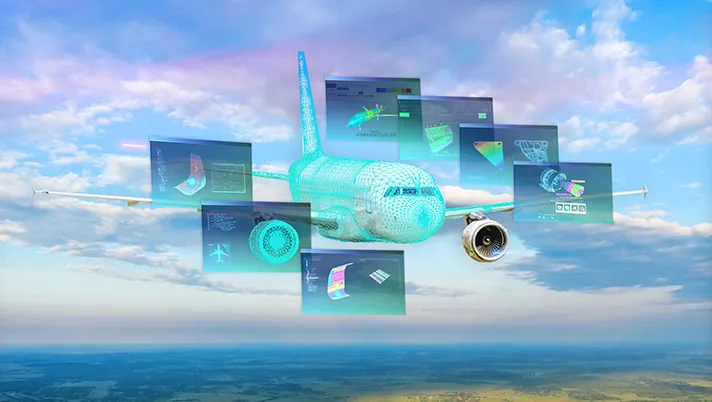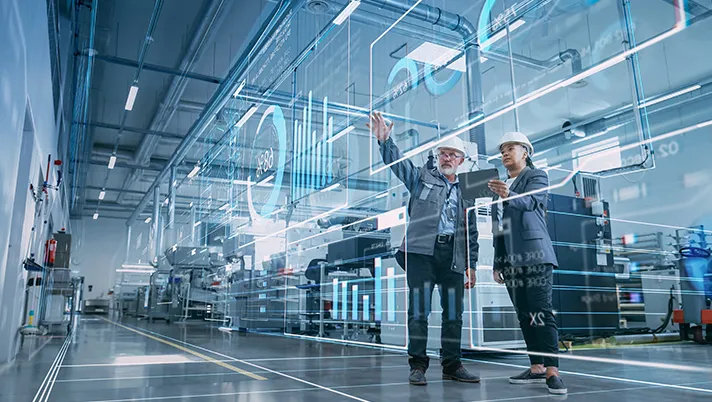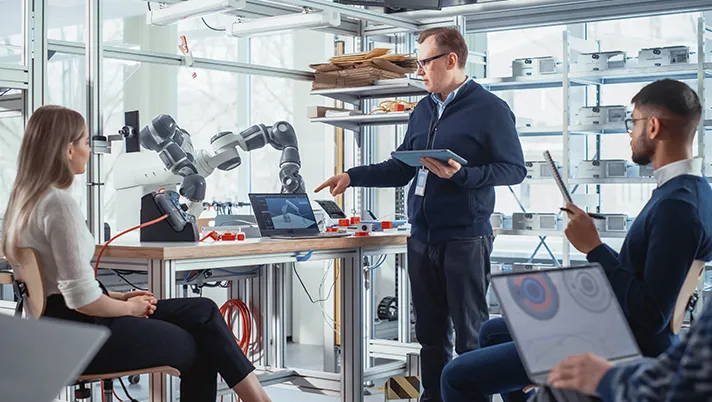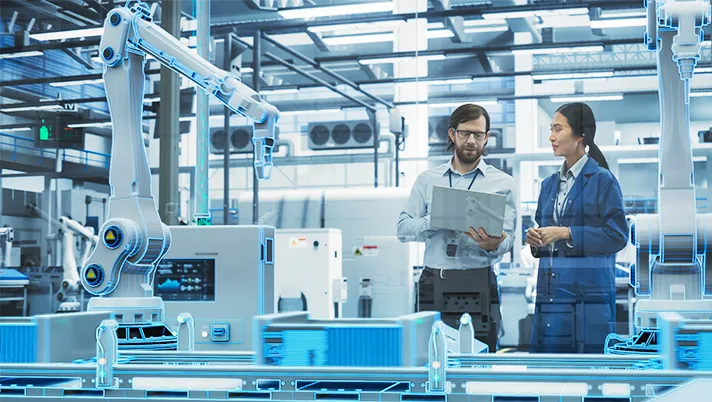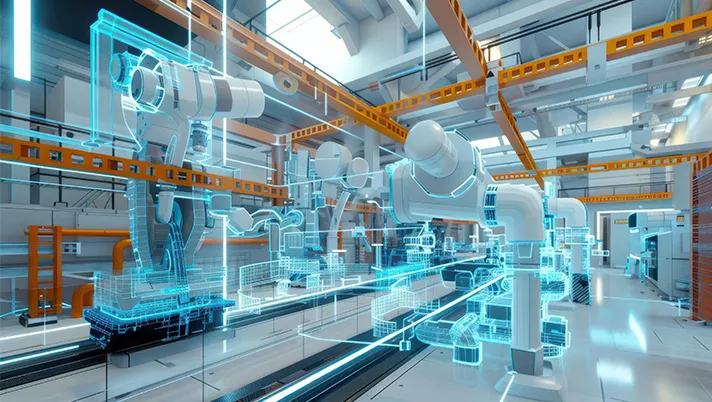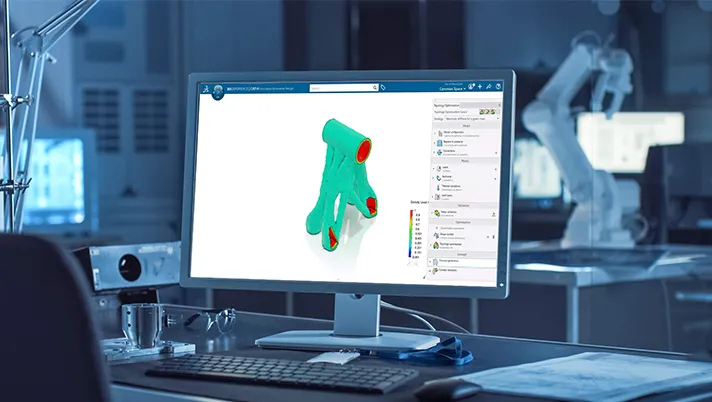How Teachers Can Develop Tomorrow’s Game-Changers
With our new Education Experience, supported by the virtual twin technology, teachers are creating a new classroom — and a new generation of multidisciplinary engineers ready to take on an increasingly complex future.
It's tough being a teacher, especially in the times we live in.
As product development becomes multifaceted and more complex, our engineering graduates find themselves in an uncomfortable situation when entering the workplace — they discover that they’re not yet future-ready.
There are no two ways about it — the skills gap and talent shortage are a reality. The disconnect between what students learn in the classroom and what employers actually require has grown to become a crisis that threatens the long-term viability of multiple disciplines.
Yet, there's an urgent need for new engineering and digital skills to create sustainable innovations that will bolster our future. Teachers now have a unique opportunity to shape this future — by transforming their learning environment and processes to create a new kind of classroom.
There is a growing skills gap, especially in sectors like aviation. Students are taking additional training after graduation by enrolling in continuous professional development (CPD) courses. This highlights a discrepancy between what is taught in standard programs and what is needed in the industry.
What additional skills are industries looking for?
- Electric, connected and autonomous vehicles
- Aerospace and defense
- High-tech and consumer electronics
Requires expertise in:
- Electric powertrains
- Battery technology
- Connectivity systems
- Sustainability (lifecycle assessment materials)
- Artificial intelligence
Requires expertise in:
- Lightweight materials
- Efficient propulsion systems
- Lifecycle environmental impact
Requires expertise in:
- Electrical engineering
- Mechanical engineering
- Software engineering
Chapter 1
The World Is Becoming Multidisciplinary
Chapter 2
Teaching Must Become Future-Proof
Chapter 3
Building Tomorrow’s Game-Changers
Chapter 1
The World Is Becoming Multidisciplinary
Consumers now want better, more sustainable and more sophisticated products that require the ingenuity and expertise of engineers across multiple disciplines. It’s no wonder that industries are now on the hunt for skilled multidisciplinary engineers who can work in a collaborative environment.
This is the landscape in which our students will be expected to perform as tomorrow's engineers and game-changers. To thrive in this future, students must become versatile and acquire knowledge that goes far beyond the pages of their textbooks.
What are Dassault Systèmes' Education Experiences?
Comprised of customized learning paths, cutting-edge software, certifications and an active online community, our Education Experiences can help educators provide their students with the skills needed to make them future-ready and boost their employability.
With our Education Experiences, students gain the knowledge, experience, know-how and collaborative skills needed to become job-ready and thrive in the dynamic and multidisciplinary world of engineering.
The teachers’ role becomes increasingly pivotal here. They now have the opportunity to push students to think outside the box — by utilizing capabilities such as the virtual twin technology to craft a new, hands-on learning experience made possible through captivating lesson plans, exercises and industry-realistic projects.
However, teachers are encumbered by several challenges:
- The industry transformation is continuous and fast. Every day, it changes how people work and the skills they need to tackle complex technological challenges. Teachers have to continuously adapt their curriculum to take these changes into account, but they lack the necessary time to stay informed and update their courses.
- Setting up a new solution — and being a driver of change — is not easy. The academic world is also bound by many curriculum-related constraints. Teachers often lack the resources (such as industry use cases and industry data) and the time to implement change of this scope and scale.
- Students are having trouble staying motivated and engaged during class. A study by the National Academy of Sciences has shown that students engaged in traditional lectures are 1.5 times more likely to fail in their courses than students engaged in hands-on learning.4 Hands-on learning can positively affect students' curiosity, teamwork and enthusiasm.
It’s time for a change — one that can give teachers the freedom to tap into the global knowledge base of the industry and the community, develop lesson plans that are always engaging and up-to-date, and provide students with the right skills to make them future-ready and boost their employability.
Chapter 2
Teaching Must Become Future-Proof
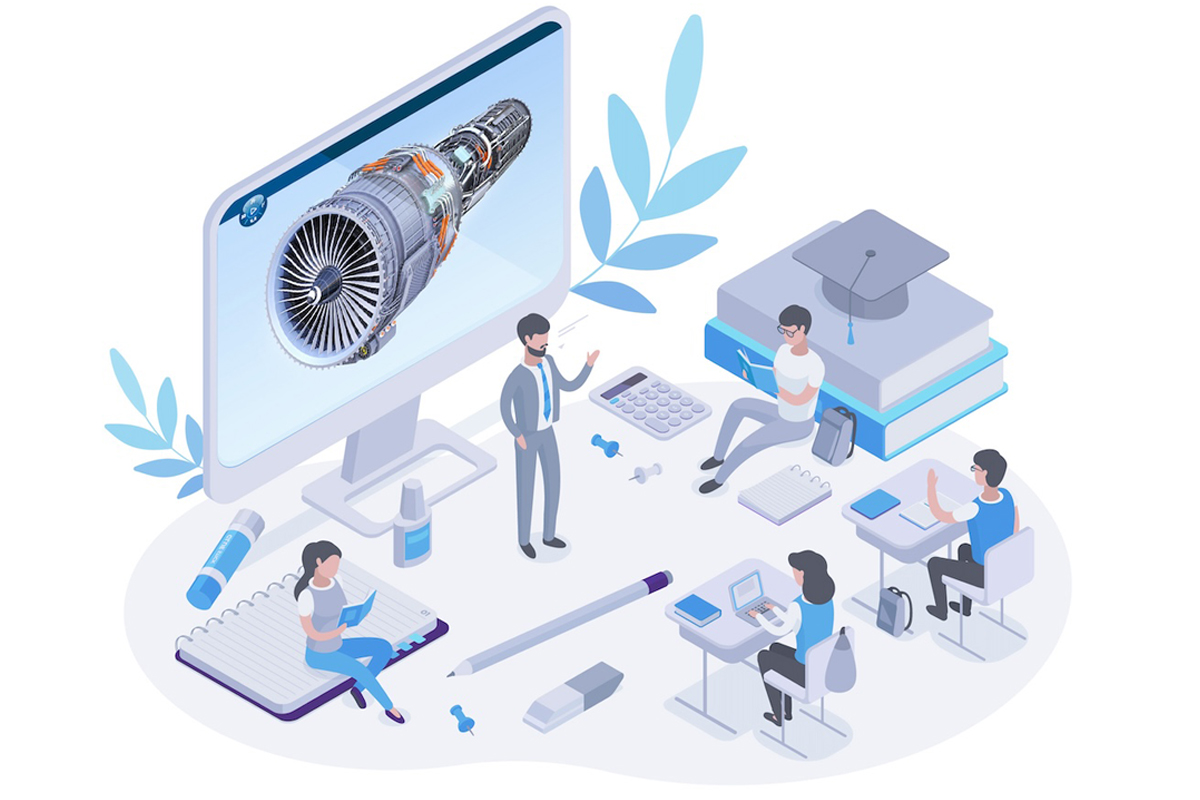
Modern engineering projects rarely exist in silos. Truly successful products are developed collaboratively, with engineers from different disciplines working together side-by-side.
The future of engineering requires developmental silos between teams to be broken down. As the world becomes circular, sustainable and complex, multidisciplinary engineering becomes the only way to tackle real-world problems and increase the quality and sustainability of products. Collaboration must become de rigueur from the very beginning.
That’s why it’s encouraging to see courses supplementing textbook problems with experience-based projects that connect different disciplines and push students to think critically. Teachers can further nurture this environment — and prepare students for the unpredictability of the working world — by empowering students to develop their knowledge and skills through the following approaches:
- Project-based learning
- Close collaboration with industry partners
Project-based learning (PBL) is a hands-on, project-based approach that gives students a chance to learn by doing rather than through traditional lectures. Powered by the virtual twin, PBL encourages students to think beyond the confines of a classroom by conceiving, designing, implementing and operating complex systems and processes in a team-based environment.
As a result, students can learn faster, better comprehend diverse knowledge and solve critical problems in a real-world environment. They also become more engaged and highly motivated in their studies.
Industry partners provide valuable insights into the key elements of various topics, balancing theoretical knowledge with practical application. Their input ensures courses remain practical and industry-focused. By having industry partners involved in curriculum development and providing real-life problem-solving experiences, learning modules and courses become more aligned with industry needs from the get-go.
Industries can also provide recommendations or fund research projects that benefit the institution and students. Teachers, in turn, will have more resources to train the next generation of students and to investigate new scientific and industrial issues. Ultimately, this will make graduates job-ready immediately after finishing their programs. It’s a win-win for everyone.
These approaches can be implemented simultaneously within one collaborative learning environment, seamlessly delivering industry-grade teaching experiences to students.
This is where our Education Experience comes in.
Access to industry-standard technologies ensures that what the education students receive is directly applicable in their future careers. This real-world exposure helps students approach problem-solving more realistically and prepares them for actual engineering challenges.
Chapter 3
Building Tomorrow’s Game-Changers
Dassault Systèmes has been a catalyst for industrial innovation for over 40 years, providing value to more than 350,000 customers worldwide. Our Education Experience can help teachers develop tomorrow's game-changers by delivering industry best practices and knowledge right into the classroom. This is how we'll help them pull it off:
Experiential teaching
- As part of our Education Experience, 3DEXPERIENCE CATIA offers a more organized and integrated environment. It is role-based, providing specific tools relevant to different engineering roles. This integration allows digital continuity for seamless transitions between design and simulation tasks.
- Rather than juggling various software across disciplines, students will now have the opportunity to work on a unified platform — and one single source of truth. This approach mirrors industry practices, allowing them to follow the complete product lifecycle from design to manufacturing within the same environment.
Did You Know?
- 90% of cars in the world are engineered with CATIA.
- An airplane engineered with CATIA takes off every 2.5 seconds.
- More than 22,000 companies use CATIA in their daily operations.
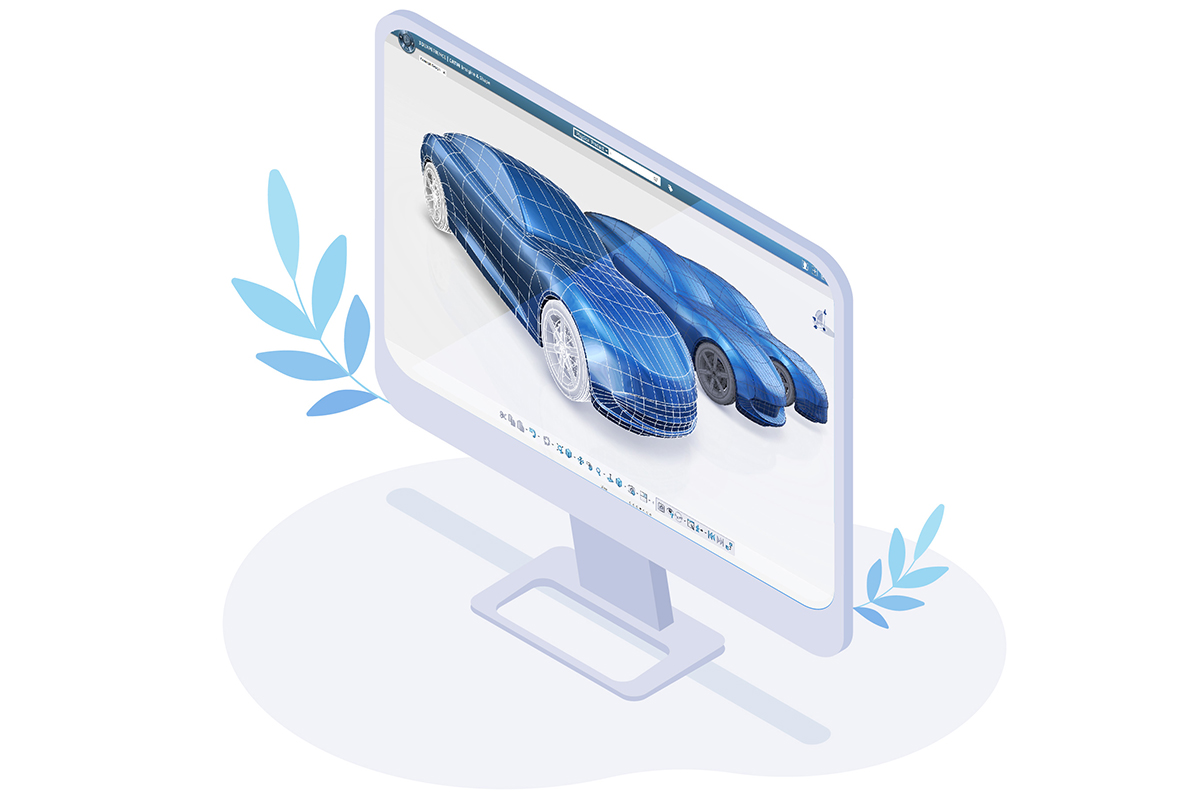
The virtual twin
- The virtual twin refers to digital representations of real-world systems or processes shown at scale. It allows teachers to enhance the learning process by designing, simulating and validating complex products and processes within a virtual environment.
- With the virtual twin, students can experiment with different design approaches and analyze design consequences within a safe, virtual workspace.
Discover the full power of the virtual twin by exploring these game-changing topics:
- Virtual Manufacturing
- Generative Design [MODSIM]
Because virtual twins can slash development time and material usage by up to 50%, students learn about creating designs with manufacturability in mind.
This reduces manufacturing costs and waste, saves time-to-market and increases efficiency in the industry.
Taking product design with manufacturability in mind also goes one step further. It's not just about ensuring the product can be efficiently manufactured. Virtual manufacturing also highlights the importance of designing the manufacturing process to be sustainable and efficient.
MODSIM unifies modeling and simulation on a common data model within a single user experience.
With MODSIM, simulation is a vital part of the product development process from beginning to end, from requirement to architecture and all the way to product management.
MODSIM also reduces the risk of late-stage failures and rework by pulling up verification and validation upfront in the design concept stage.
With MODSIM, engineers can ensure that the product meets all quality, sustainability and manufacturability requirements.
Effective collaboration
- Teachers have access to a global community of peers and experts, constantly discussing and exchanging best practices.
- This Education Experience also comes with access to customized learning paths created by experts, cutting-edge software and a globally recognized certification program.
- An ever-growing knowledge repository allows teachers to pick and choose from a growing selection of modules and set up their own learning paths to fit their specific needs.
Accessible resources
- Previously, it was a challenge to manage courses and project files while ensuring everyone had access to the latest versions. Now, all project-related information is accessible on the platform, allowing for seamless collaboration.
- With digital continuity enabled, teachers can create archives and track class and project evolution over the academic year and beyond. The archives also make it easier to revisit and build on past projects.
- Students can also easily post questions and access project-related documents. This integrated approach allows students at all levels to participate in the Q&A session, enhancing the overall learning experience.
Digital continuity
- The 3DEXPERIENCE platform is always online and always available. Its intuitive and customizable dashboards help teachers keep track of course information and projects within a centralized online location.
- Teachers and students can access the solution — and the learning environment — from wherever they are and continue the class remotely without interruption.
- With visually rich dashboards, teachers can compile and distribute lesson plans, homework, class notes and resources in one convenient location online.
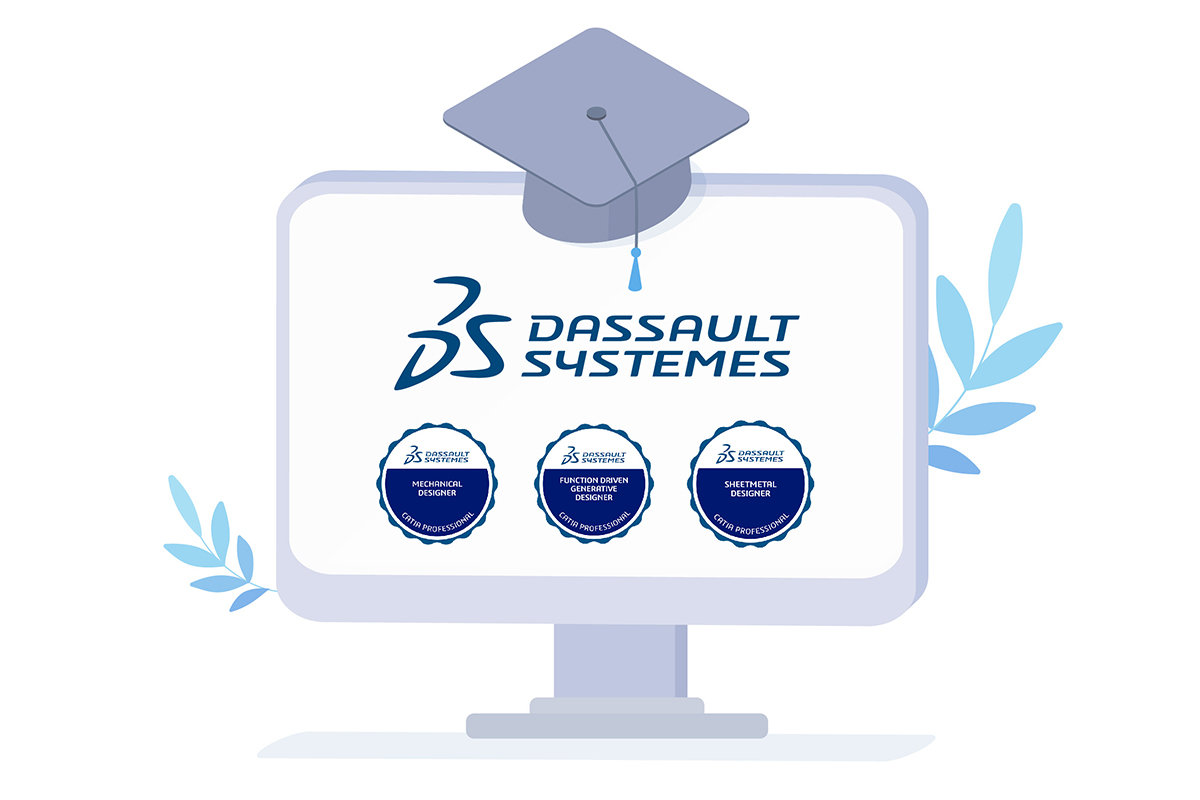
Did you know?
Dassault Systèmes' certification program is a valuable skill differentiator required by the industry.
In addition to being a quantitative measurement of engineering skills, it's also a globally recognized certification program that can make students stand out in an increasingly competitive job market.
Conclusion
Teachers have the power to shape the next generation of game-changers by giving them the skills to thrive in a complex, multidisciplinary world. With our Education Experience and 3DEXPERIENCE CATIA, they're fully equipped to bring a new engineering classroom to life. This experience offers a no-compromise learning environment for students augmented by a thriving community of leaders, experts and peers.
Tomorrow's classroom is now within reach. All that remains is to set it in motion.
References
1 "Artificial Intelligence Enters the Workforce: Cengage Group’s 2023 Employability Report Exposes New Hiring Trends, Shaky Graduate Confidence" by Cengage (July 2023)
2 "Towards 2023: the European Year of Skills" by the European Union (November 2022)
3 "The $8.5 Trillion Talent Shortage" by Korn Ferry
4 "Active learning increases student performance in science, engineering, and mathematics" by Proceedings of the National Academy of Sciences (PNAS) (April 2014)
DISCOVER OUR READY-TO-USE EDUCATION EXPERIENCES
Jump into the 3DEXPERIENCE with our brand new packages for Education
Teacher Experience: your teaching journey, fully supported!
Meet the new Teacher Experience in 3DEXPERIENCE for Education: streamline courses, manage classes, and track progress with ease. Empowering educators, simplified!
Teaching the Future of Engineering with CATIA
Prepare your students for the Future of Industry through the help of virtual engineering experiences
Teaching the Future of 3D Design with SOLIDWORKS
Prepare your students for the next generation of product development
Teaching Modeling and Simulation with SIMULIA
Empowering students with Simulation-driven experiences to solve real-world problems
Teaching Virtual Factory with DELMIA
Build sustainable virtual experiences to re-imagine the future of manufacturing
Teaching Systems Engineering with CATIA
Embrace MBSE with the unique value of the 3DEXPERIENCE platform to improve your teaching methods and get your students future-ready
Teaching Construction with the 3DEXPERIENCE
Teach collaborative experiences that develop skills to leverage BIM from planning to completion, revolutionizing construction projects
Teaching Sustainable Engineering with the 3DEXPERIENCE
Teach the Life Cycle Assessment (LCA) methodology and bring a new circular mindset for a more sustainable future
Teaching Medical Device Engineering with the 3DEXPERIENCE
Explore the Future of Healthcare Innovation with the Medical Device Engineering Learning journey
Teaching Engineering Sciences with SCILAB
Equipping Students with the Mathematical Skills Behind Modern Engineering



